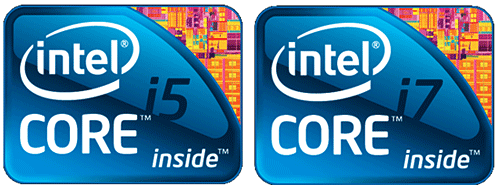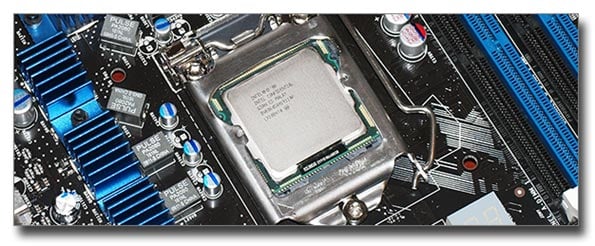Intel Core i5, Core i7 800 Processors and P55 Express
Introduction, Specifications, Related Links

 With today's launch of their new "Lynnfield" based Core i5 and i7 800 series processors, and the accompanying P55 Express chipset, Intel's current flagship CPU microarchitecture--codenamed Nehalem--finally trickles its way down into the mainstream computing segment. Since Nehalem first landed on the desktop in the form of the Core i7 line of processors, it has unequivocally owned the performance segment of the market. They are simply the fastest desktop processors currently available, bar none. But while the Core i7 was riding high, Intel still had the established Core 2 line-up to satisfy the mainstream, though meeting market demand for a refresh here as well was obviously the end game.
With today's launch of their new "Lynnfield" based Core i5 and i7 800 series processors, and the accompanying P55 Express chipset, Intel's current flagship CPU microarchitecture--codenamed Nehalem--finally trickles its way down into the mainstream computing segment. Since Nehalem first landed on the desktop in the form of the Core i7 line of processors, it has unequivocally owned the performance segment of the market. They are simply the fastest desktop processors currently available, bar none. But while the Core i7 was riding high, Intel still had the established Core 2 line-up to satisfy the mainstream, though meeting market demand for a refresh here as well was obviously the end game.
Along with the new Core i5 and Core i7 800 series processors and P55 Express chipset, also come a plethora of new features and changes. While the Core i5 and i7 800 series processors are based on Nehalem and share similar execution cores, with these new processors, Intel has changed the integrated memory controller configuration, brought PCI Express connectivity on-die, and revamped their Turbo Mode functionality to offer varying levels of increased performance depending on the type of application being used. These new processors also require a new socket, new coolers, and the P55 Express chipset--which is an elegant single-chip solution.
There's a lot of information to cover to fill you all in on the pertinent details regarding the Core i5 and i7 800 series processors and P55 Express chipset. So we'll dive right in. First up we have some specifications on tap, and then we'll follow up with architectural and platform details, and a full performance breakdown using a trio of P55-based motherboards. Lots to see; let's get to it...


Intel Core i5 Processor On The Intel DP55KG "Kingsberg" Motherboard
|
|
|
Details regarding Lynnfield and the P55 chipset haven't exactly been well guarded secrets these past few months. In fact, we've already posted a number of articles related to both, in which we cover many of the main features and specifications. We have obviously written about Nehalem in depth in our coverage of the original Core i7 launch. But we've also posted information on overclocking Nehalem, and have offered up a number of P55-based motherboard sneak peeks as well...
- Intel Core i7 Processors: Nehalem and X58 Have Arrived
- Core i7 Extreme Overclocking With Liquid Nitrogen
- Lynnfield Motherboard Sneak Peeks
- Overclocking Intel's Core i7 920 Processor
- Intel Showcases Dunnington, Nehalem and Larrabee Processors
- IDF: Inside Nehalem
- Intel Nehalem Processor and SSD Sneak Peek
- Intel Penryn and Nehalem Details Emerge
- Intel Reveals Nehalem Naming Convention
- NVIDIA To Support SLI On Intel X58 Chipset
We're going to summarize many of the main details again here, but if you'd like to check out our complete coverage of the Core i7 (Nehalem) and the X58 Express chipset, the list of articles above offers just about all there is to know.







